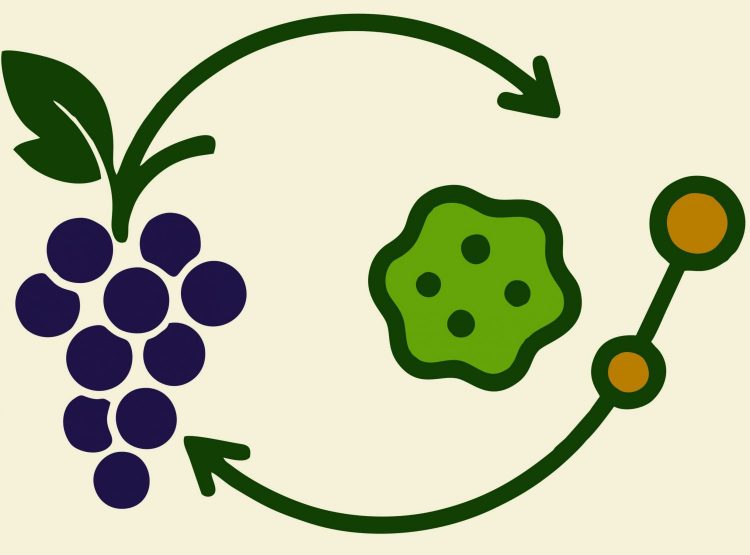Elite grapevine cultivars often lack durable resistance to diseases, especially grapevine yellows diseases caused by phytoplasmas. As a result, EU countries spend millions annually to offset losses from grapevine yellows. Since direct control of phytoplasmas in plants is not possible, growers rely on indirect methods such as spraying insect vectors, pruning infected parts, and replanting. Both of the phytoplasma that cause grapevine yellows (‘Candidatus Phytoplasma solani’ (Bois noir) and Flavescence dorée) can only be managed by frequent pesticide use to control the iknsects that spread them. However, many effective chemicals have been banned, leaving no highly effective treatment currently available. The need for resistant cultivars and alternative disease management is imperative.
In this project we want to advance our knowledge about the plant-phytoplasma disease interactions with a focus on phytoplasma effector proteins, which are believed to be a crucial factor in symptom development. We hope this knowledge will help to advance strategies for prevention grapevine yellows diseases.
Specific objectives of the proposed project
The main goal of this project is to engineer phytoplasma resistant grapevine/potato plants with the same level of changes as can occur in mutagenesis which is accepted at the global level. As an overall strategy, we suggest an adaptation of DNA-free genetically edited protoplasts of grapevine using direct delivery of purified CRISPR/Cas9 RNPs by targeting the DMR6 or other potential susceptible gene(s) S in order to achieve resistance or tolerance to ’Ca. P. solani’, which has not been reported yet.
If we identify the most important effector proteins and their interactors, the results will open a plethora of new possibilities in research of breeding and disease management.
To achieve the main aim of this project we have set the following specific objectives:
- Characterize known and novel effectors from ‘Ca. P. solani’ strains.
- Analyze effector-host interactions, especially with plant transcription factors.
- Compare infected vs. healthy grapevines (including gene-edited variants).
- Use transformation and OMICs tools to explore symptom development mechanisms and effector function.
